Renderings revealed for 277 Canal at Broadway
United American Land, which owns much of Canal west of Broadway (and maybe east too!) has shared the renderings for 277 Canal, the three-story Renaissance Revival-style commercial building on the northeast corner of Broadway. The firm is adding 10 stories of residential to create 100 units, 25 percent of which will be affordable.
Architect Morris Adjmi has designed the building, which will be made of textured brick, metal and terracotta and will retain the existing historic façade on the first three floors, keeping the feel of the street level. The building was built in 1927 and included a movie theater through the 1970s; it has not been significantly altered since. It is in the SoHo-Cast Iron Historic District Extension.
Here’s the text from the 2010 Landmarks designation report for the district:
This Renaissance Revival-style commercial building, which originally contained a movie theater in addition to retail space and lofts, was built in 1927-28 by the D & D Land Improvement Company a few years after the area around Broadway and Canal Street was established as a major transportation hub by the opening of the Brooklyn-Manhattan Transit line under Broadway. This building includes a subway entrance and passageway on Broadway. The Department of Buildings listed David M. Oltarsh as the architect and general contractor, and applied lettering on the façade bears his name. Upon its completion, the theater was leased to the Major Theater Corp. By 1947, the theater was known as the Giglio-Major Theater, reflecting its proximity to Little Italy. By 1971, it was the Canal Cinema Theater and was serving newer immigrants from the Far East by showing movies from China.
The building’s retail and loft space was rented by a variety of businesses and organizations, including Kruger & Grossmen Men’s furnishings (1931), Kampf & Vaccarella Old Books and Magazines (1936), L. Giuletti & Sons, accordions (1938), Loft Candies (1942), the Bengor Hosiery Company (1950), the International Brotherhood of Teamsters Hall (1954), and the Pearl River Department Store (1990). The building, which remains in commercial use today although the theater is no longer open, is evocative of the changes that were taking place in the SoHo area as a result of transportation improvements and new forms of mass entertainment in the early decades of the 20th Century.








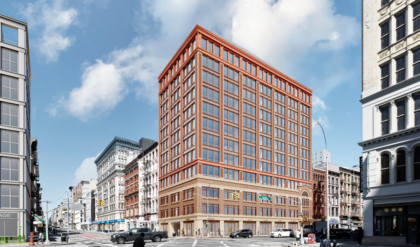
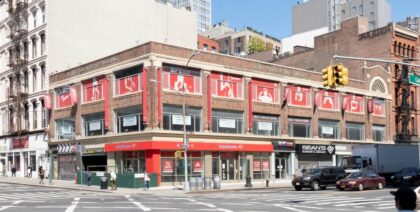
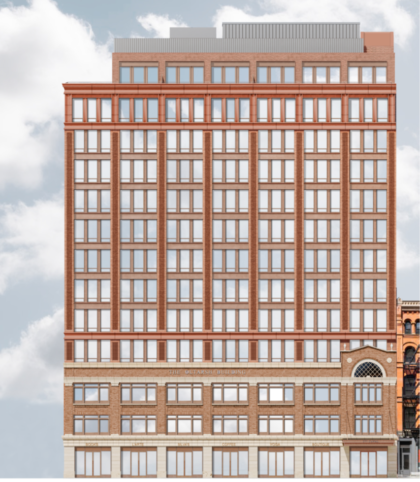
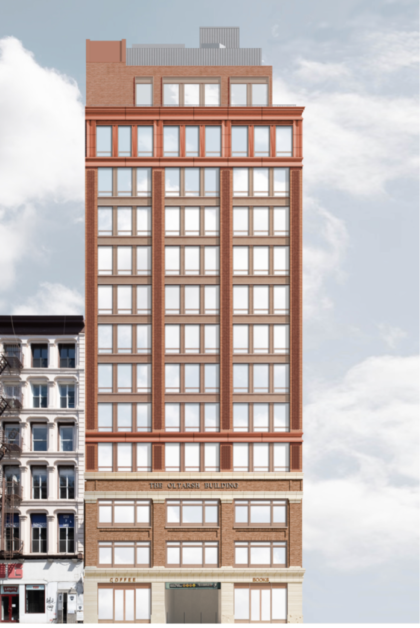
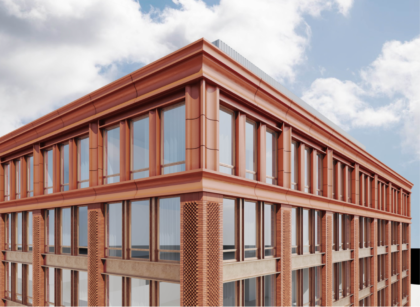








Looks great!
Any word on development of the opposite, northwest, corner? I thought there were plans to develop that as well.
Also, any idea if the public toilet and counterfeit bazaar, I mean parking lot, at 411 Broadway will ever be developed?
Found some info on the plans for that opposite corner…I wonder what became of this proposal.
https://www.citylandnyc.org/135-foot-tall-building-proposed-corner-broadway-canal/
You can see a portion of their proposed building for the NW corner (left side) in the first rendering, across Broadway.
Is there a timeline for this project?
Also curious about the North-East corner here as well. I believe that was also supposed to be a new building. Any update with that?
This is a great architecture firm, I’m glad they were chosen for such a prominent corner.
The United American Land Co and their architects of choice have been a blight on the SoHo and Tribeca neighborhoods for a very long time.
Well said
If you are going to build big, a very sensitive solution —
I wonder if there are any remnants of the theatre left. . .
Would anyone know?
Are the “affordable” units permanently affordable?
Or will they go to market after 20-25 years?
They should be permanent. You can check with CB1.